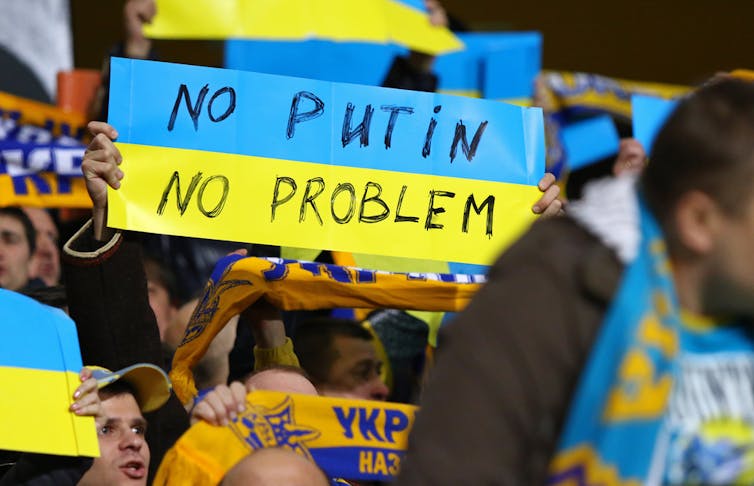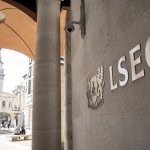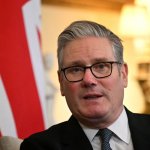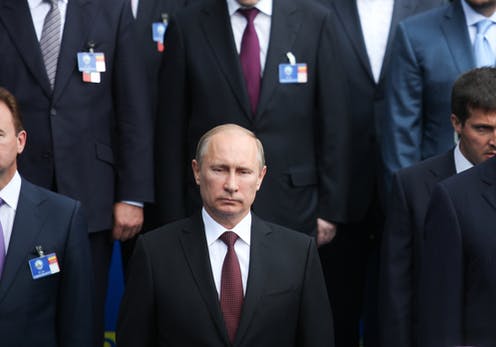Vodograj/Shutterstock
There is a pressing need to understand what’s behind Moscow’s growing threat to use military force against Ukraine. The real motivation for Russia’s aggression will largely determine the west’s room for manoeuvre. Despite amassing 100,000 troops on its western border with Ukraine, Russia has repeatedly denied that it plans to invade its neighbour. But the country has also declared its readiness to respond to any provocation.
If the Russian government’s actions are driven by the logic of regime survival, no amount of western concessions will prevent Russia from constantly undermining Ukraine’s statehood. We believe there are two dominant perspectives that can explain Russia’s recent escalation of tensions with Ukraine. One is that Russia’s policy is driven by power and security considerations, and the other is that challenges at home push Moscow towards a more aggressive policy. Both have practical repercussions for the region.
Power politics
The first scenario interprets Moscow’s moves in terms of power politics. Russia aims to prevent further security and defence cooperation between Ukraine and the west, including any future Nato enlargement.
While Ukraine is not a member of Nato, it has been tightening its relationship with the organisation, with a long-held objective of becoming a full member. Russia also wants to ensure Kyiv does not attempt to regain control over the two separatist entities – Luhansk and Donetsk – in south-eastern Ukraine, where Russian-backed rebels have been fighting Ukrainian regular forces since 2014.
Pundits disagree whether Russia’s policy towards Ukraine has been driven by defensive motives or by offensive aims such as Moscow’s ambitions to increase its power and influence. For those in the defensive camp, Russia/the west/Ukraine relations represent what in international relations parlance is called a “security dilemma”. This means that defensive activities of one side are interpreted as offensive – and thus potentially threatening – by the other. The rush by central European states towards Nato in the 1990s – and Ukraine’s consistent promotion of closer ties with the alliance – are motivated by the quest for security.
But Moscow interprets Nato enlargement as an offensive move. According to the Kremlin narrative, it was orchestrated by Washington and targeted Russia. Moscow usually terms accepting new members as “Nato expansion”, even though the process is always at the request of aspiring joiners. It cannot be compared to expanding colonial empires.
Still, some argue that the annexation of Crimea stemmed from Russia’s legitimate security concerns. Believing its interests have been ignored by the west, Russia responded to Nato and EU enlargements and liberal democracy initiatives by annexing Crimea.
Pundits in the offensive camp see Russia’s policy towards Ukraine as pursuing regional dominance in the post-Soviet region. The aim is not to recreate the Soviet Union but to ensure no other big power is militarily present in Russia’s vicinity.
International relations expert Elias Götz has shown that, since 1991, Russia has consistently attempted to constrain Ukraine’s autonomy in foreign policy using political pressure, economic sanctions or military force. In a nutshell, the closer Ukraine’s ties with the west – especially the US – the more aggressive Russia’s reaction.

Katatonia82/Shutterstock
If the Russian government is motivated primarily by power-political incentives, a lasting compromise safeguarding Ukraine’s sovereignty remains possible. It would require far-reaching compromises on part of the west and Ukraine: the former would need to limit its military assistance and focus primarily on economic relations with Ukraine.
Russia’s acquiescence to China’s rising profile in the post-Soviet space – with Beijing gradually increasing its economic and political footprint but shying away from military deployments – illustrates that Moscow may be open to some form of compromise.
Ukraine would pay an even higher price in the form of self-imposed limitations on its security policy, as Finland did during the Cold War, resigning from closer security and defence ties with the west in return for Soviet non-interference in its domestic politics. Far from ideal, in practical terms it means a return to the spheres of influence politicking, where one state claims political and military influence over another country or an entire region.
Putin’s domestic situation
The second explanation highlights the importance of domestic politics in Russian foreign policy. The basic argument employed by Putin to justify his staying in power is that the sole alternative is chaos. Kazakhstan has recently provided the perfect illustration of the narrative he wants Russians to believe – that protests lead to disruption, violence and even foreign intervention.
In Putin’s eyes, a prosperous and successful Ukraine maintaining cordial relations with the west should never be allowed to materialise. The Kremlin is determined to show – and potentially mastermind – the failure of Ukraine’s political reforms. Moscow’s threat to use military force, combined with cyberattacks on Ukraine’s government websites, have been seen by many as part of the Kremlin’s plan to undermine Ukrainian statehood and the success of its institutions.
The annexation of Crimea showed the usefulness of aggressive foreign policy for domestic purposes. It was portrayed by the Kremlin-friendly media as a small victory against the west and a justifiable response to the popular uprisings allegedly sponsored by western states.
This “reunification” bought Vladimir Putin four years of high popularity ratings. Those effects, however, were not permanent. There are fewer and fewer opportunities for Russians to vent frustration and disagreement with Russia’s current political course.
The crackdown on the Russian opposition and heavy-handed tactics in suppressing alternative views of the Soviet past and Russian present have seen the removal of the last remaining safety valves. Another “small victory” over the west would buy extra time and pave the way for a controlled presidential re-election of Putin in 2024.
If Russia’s actions are driven by the logic of regime survival, with the Kremlin fearing a spillover of democratic reforms and positive effects of toppling “rulers for life”, even far-reaching western concessions are unlikely to stop it from undermining Ukraine’s independence.
Russia’s power-political demands of Nato – including the alliance’s withdrawal to the German-Polish border – are a mere façade. The mortal threat to the Kremlin is not Nato, but a less corrupt and economically prosperous and democratic Ukraine.
![]()
The authors do not work for, consult, own shares in or receive funding from any company or organisation that would benefit from this article, and have disclosed no relevant affiliations beyond their academic appointment.











